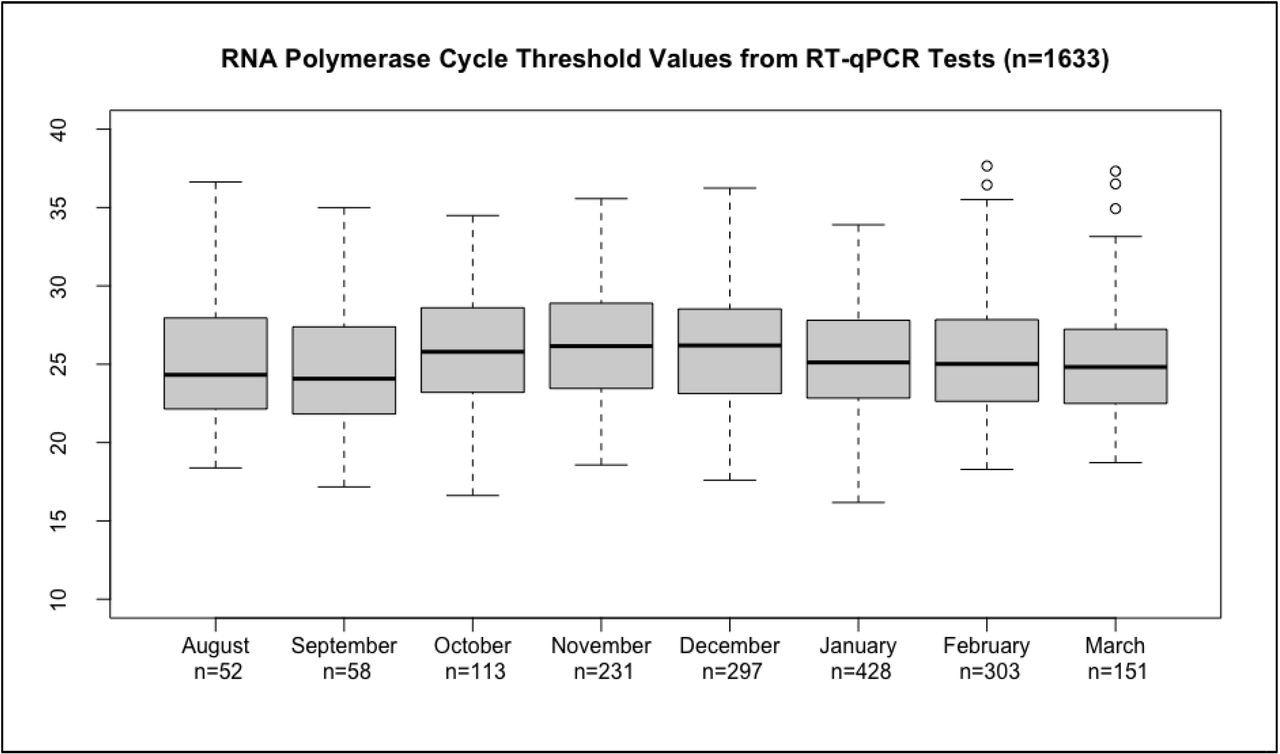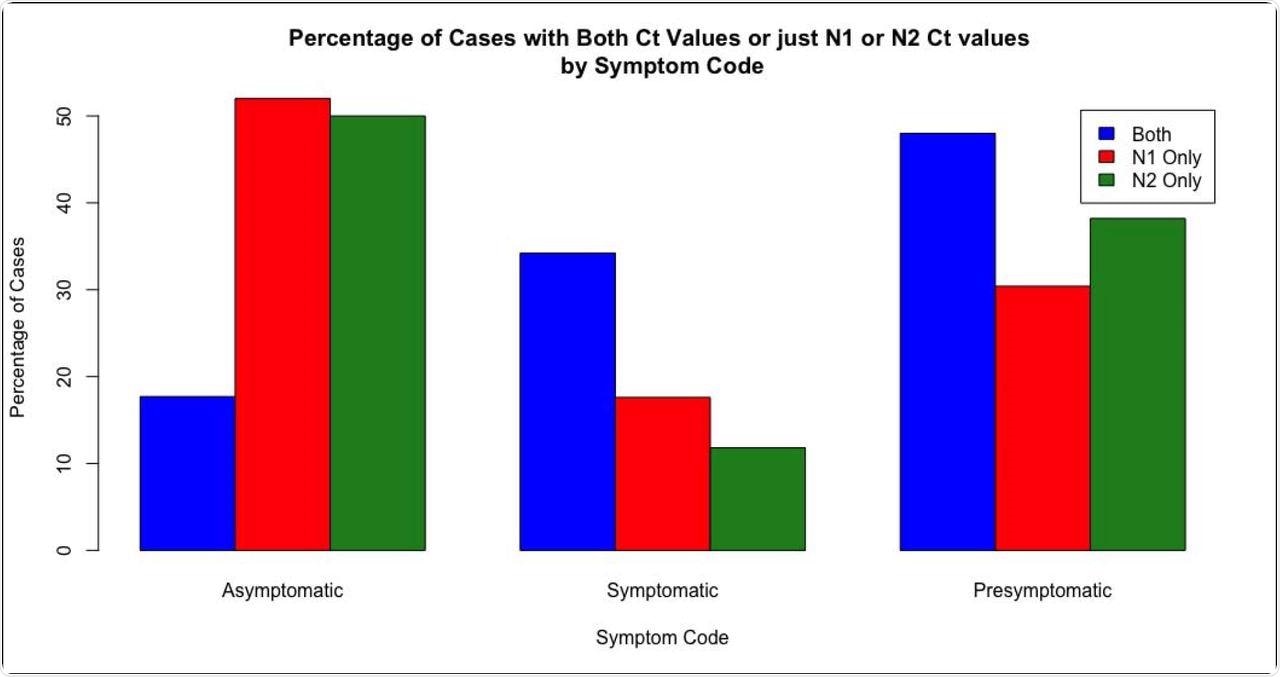In a recent study posted to the medRxiv* preprint server, a team of researchers investigated the progression of infection in students and employees who tested positive for the severe acute respiratory syndrome coronavirus 2 (SARS-CoV-2) at the Boston University (BU) clinical testing laboratory.

Study: Comparison of Anterior Nares Viral Loads in Asymptomatic and Symptomatic Individuals Diagnosed with SARS-CoV-2 in a University Screening Program. Image Credit: Drazen Zigic / Shutterstock.com

 This news article was a review of a preliminary scientific report that had not undergone peer-review at the time of publication. Since its initial publication, the scientific report has now been peer reviewed and accepted for publication in a Scientific Journal. Links to the preliminary and peer-reviewed reports are available in the Sources section at the bottom of this article. View Sources
This news article was a review of a preliminary scientific report that had not undergone peer-review at the time of publication. Since its initial publication, the scientific report has now been peer reviewed and accepted for publication in a Scientific Journal. Links to the preliminary and peer-reviewed reports are available in the Sources section at the bottom of this article. View Sources
Background
Quantitative reverse-transcription polymerase chain reaction (qRT-PCR) is the current gold standard for coronavirus disease 2019 (COVID-19) testing. This test detects SARS-CoV-2 ribonucleic acid (RNA) and reports cycle threshold (CT) values, which are also referred to as PCR signal intensity. CT values, inversely proportional to the viral load, reflect relative viral infectiousness.
Asymptomatic and pre-symptomatic individuals have contributed to SARS-CoV-2 transmission as much as symptomatic individuals. It would therefore be logical to assume that CT values would differ for COVID-19 symptomatic and asymptomatic individuals. Taken together, any information related to viral load, CT values, the timing of symptom onset, and SARS-CoV-2 transmissibility will help in continuing current COVID-19 mitigation efforts.
About the study
The testing pool of the present study included about 40,000 students and employees who entered BU campus. Of these 40,000 individuals, the researchers sampled 1,633 individuals who tested positive for COVID-19 between August 7, 2020, and March 18, 2021. The researchers then retrospectively analyzed the clinical symptoms, epidemiological contact tracing data, and laboratory investigations of these individuals into CT values.
The analysis of the raw CT values included all 1,633 SARS-CoV-2 positive cases. This analysis spanned across the entire dataset, age brackets, as well as student and employee populations.
RT-qPCR primers targeting N1, N2, and RNA polymerase (RNase P) were used to evaluate each test sample. Samples with N1 and N2 target CT values above 40 were considered SARS-CoV-2 negative, whereas values under 40 for at least one target were considered SARS-CoV-2 positive. The human housekeeping gene RNase P target was used for quality control and was not used to normalize N1 or N2 values.
All test subjects were categorized as presymptomatic, symptomatic, or asymptomatic and self-reported their symptoms in an interview with a trained health care professional. Presymptomatic subjects experienced symptoms on day 0 of the positive RT-qPCR test or any day up to 10 days. Asymptomatic subjects developed no COVID-19-related symptoms before or after a positive RT-qPCR test, whereas symptomatic subjects had symptoms before the day of testing.
Notably, during the study period, all SARS-CoV-2 positive cases, regardless of symptoms, were quarantined for the same amount of time, thus reducing the incentive to deny the presence of COVID-19 symptoms.
Study findings
A strong relationship between RT-qPCR signal intensity and the presence or absence of symptoms was observed. To this end, asymptomatic individuals had the lowest viral loads (highest CT values), whereas symptomatic individuals had the highest viral loads, and presymptomatic ones were in between these extremes.

RNA Polymerase cycle threshold values by month over the course of the study.
The results demonstrated that symptomatic individuals had, on average, higher viral loads than those who were presymptomatic or asymptomatic, thereby suggesting that they are more infectious.
The United States Centers for Disease Control and Prevention (CDC) protocol requires both nucleocapsid antigens (N1 and N2) results to be positive for the overall RT-qPCR test result to be declared positive. Thus, in the present study, a positive RT-qPCR test was considered positive when either or both the N1 or N2 antigenic target results are positive, which makes this testing strategy more sensitive than the CDC definition, while somewhat less specific.
However, this was the favored approach, as detecting asymptomatic individuals with low viral loads would have more effectively limited the spread of SARS-CoV-2 in the densely packed BU campus. Comparisons of CT values across the groups of single-versus both-target amplification positives were conducted using non-parametric statistical tests, Kruskal-Wallis, and Mann-Whitney U tests.
The results showed that only 12.4% of the positive tests had a single amplified CT value (N1 or N2) and were asymptomatic. Future studies will demonstrate whether CT values could predict the ability of an individual to infect others.
While 87.7% of total cases amplified both N1 and N2 targets, 7.7% of cases only amplified N1 and 4.7% only amplified N2. Of the 87.7% of cases that detected both targets, 48.0% were presymptomatic, 34.2% were symptomatic, and 17.7% were asymptomatic.
Moreover, there was not much difference in the distribution of presymptomatic, asymptomatic, or symptomatic individuals between the N1-only and N2-only populations. This suggests that the overall results only slightly differed from the tests defined by the CDC protocol.

Percentage of Cases with either both or single target(s) amplified by symptom classification.
Conclusions
Consistent with what the researchers hypothesized, the study findings supported that asymptomatic patients are generally less infectious than symptomatic patients. As CT values are strongly associated with symptomatology, most test subjects experienced at least one symptom at some time before or within ten days of testing COVID-19 positive. Those who reported having symptoms at the time of diagnosis had the lowest CT values, while those who remained asymptomatic had the highest CT values.
Only 5.5% of the test subjects had been administered a COVID-19 vaccine at the time of data collection and BU did not mandate reporting vaccination status. Taken together, these factors prevented this analysis from observing the interaction of vaccination status in conjunction with CT values or COVID-19 symptoms. Further research should address vaccination status as a variable in the analysis, similar to the one described in this study.

 This news article was a review of a preliminary scientific report that had not undergone peer-review at the time of publication. Since its initial publication, the scientific report has now been peer reviewed and accepted for publication in a Scientific Journal. Links to the preliminary and peer-reviewed reports are available in the Sources section at the bottom of this article. View Sources
This news article was a review of a preliminary scientific report that had not undergone peer-review at the time of publication. Since its initial publication, the scientific report has now been peer reviewed and accepted for publication in a Scientific Journal. Links to the preliminary and peer-reviewed reports are available in the Sources section at the bottom of this article. View Sources
Journal references:
- Preliminary scientific report.
Hall, S. M., Landaverde, L., Gill, C. J., et al. (2022). Comparison of Anterior Nares Viral Loads in Asymptomatic and Symptomatic Individuals Diagnosed with SARS-CoV-2 in a University Screening Program. medRxiv. doi:10.1101/2022.01.12.22269139. https://www.medrxiv.org/content/10.1101/2022.01.12.22269139v1.
- Peer reviewed and published scientific report.
Hall, Samantha M., Lena Landaverde, Christopher J. Gill, Grace M. Yee, Madison Sullivan, Lynn Doucette-Stamm, Hannah Landsberg, et al. 2022. “Comparison of Anterior Nares CT Values in Asymptomatic and Symptomatic Individuals Diagnosed with SARS-CoV-2 in a University Screening Program.” Edited by Etsuro Ito. PLOS ONE 17 (7): e0270694. https://doi.org/10.1371/journal.pone.0270694. https://journals.plos.org/plosone/article?id=10.1371/journal.pone.0270694.
Article Revisions
- May 10 2023 - The preprint preliminary research paper that this article was based upon was accepted for publication in a peer-reviewed Scientific Journal. This article was edited accordingly to include a link to the final peer-reviewed paper, now shown in the sources section.